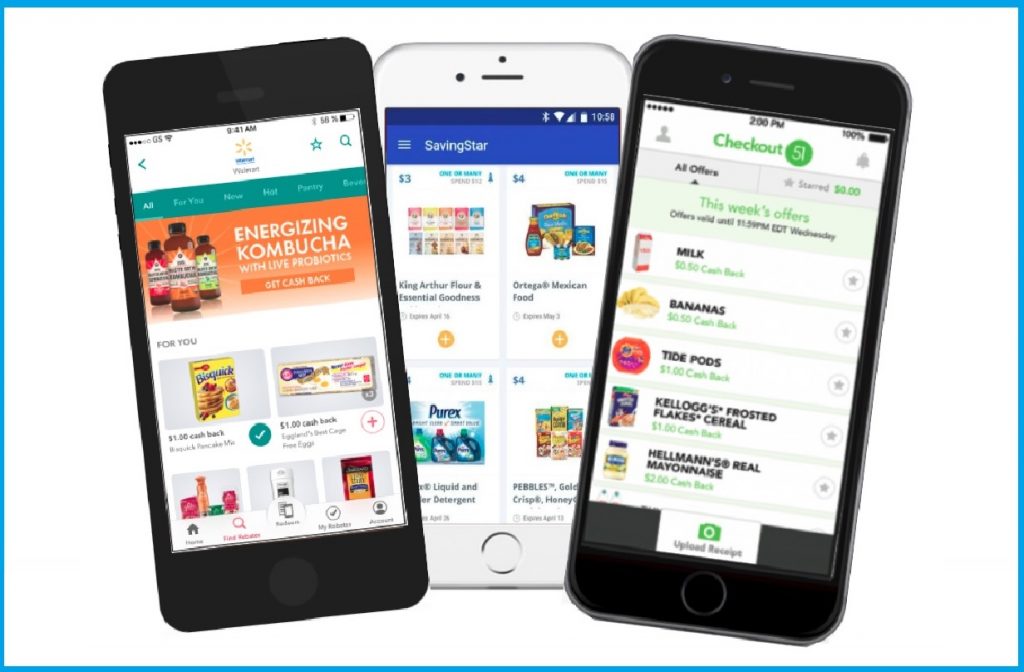
One of Ibotta’s taglines is that its clipless rebate offers are “better than coupons”. But are they? A new look at cash-back apps finds that often they are, but sometimes they aren’t – depending on what you’re looking for.
Kantar Media is the latest to release an analysis of coupon facts and figures from the past year. Its main findings are similar to those in reports that preceded its version – digital coupons are growing, but paper coupons are still preeminent; fewer coupons are being offered and redeemed, but those that are available are worth more.
But unique in Kantar’s report is a peek behind the curtain of digital rebates, and how they play into the promotional landscape. Many users of cash-back apps like Ibotta and Checkout 51 prefer the convenience of cash back over clipping coupons, sometimes to the point of no longer bothering to use coupons at all anymore. Are they onto something – or are they missing out?
One area in which cash-back offers clearly outpace traditional paper coupons is their ability to help you save money on food. In its own annual report each year, Inmar has found that coupon users overwhelmingly prefer coupons for food items over nonfood items. But each year, the number of food coupons declines. In 2018, Inmar found that only 27.2% of all coupons distributed were for edible items.
But Kantar says saving money on food could be as easy as going online. It found that the food vs. nonfood ratio is almost completely reversed in cash-back apps, where 67% of offers are for food items, while only 33% are for nonfood items.
That’s similar to the ratio among digital coupons, which tend to offer far more discounts on food than paper coupons do. So in that sense, cash-back app offers may be better than paper coupons – but they’re not necessarily better than digital coupons.
That’s true when it comes to offer values as well. Kantar found that the average value of rebate offers last year was $1.51, compared to digital coupons’ $1.62. Digital coupons widened the gap even more among food offers, with an average value of $2.07 compared to cash-back apps’ average of $1.92.
But one area in which cash-back apps are the clear winners over both digital and paper coupons – booze.
You don’t see many coupons for alcohol, due to strict regulations on pricing and discounting. But cash-back apps are free to offer discounts for beer, wine and liquor. So they’re taking full advantage of it – and so are their users. Kantar found that alcoholic beverages represent the top cash-back category in terms of redemptions, ahead of snacks, “other packaged goods”, cereal and nonalcoholic beverages.
Such additional opportunities for saving have made cash-back apps popular – but how popular? When Inmar released its 2018 findings last month, the steep decline in the number of coupons both distributed and redeemed raised the question of how many of those offers were actually migrating to cash-back apps as opposed to simply disappearing? It appears the answer is, not enough to fully account for the decline. Ibotta, the largest rebate app, recently boasted that has delivered more than $450 million to its 30 million users over the past seven years. Compare that to the 1.7 billion coupons worth $2.7 billion redeemed last year alone, and it’s clear that cash-back offers are used far less often than traditional coupons. And that doesn’t even include users who are able to double-dip by redeeming a coupon and a cash-back offer on the purchase of a single item.
While cash-back apps are a nice additional way to save, then, and another way for brands to get their message in front of more eyeballs, it doesn’t appear they will replace traditional coupons any time soon. Kantar says they still represent a small percentage of all available offers, while coupons – both paper and digital – still dominate.
So some may dispute that cash-back offers are “better than coupons”. But with coupons for items that you actually want to buy getting harder to find – most will agree that cash-back offers on those items are certainly better than no offers at all.










